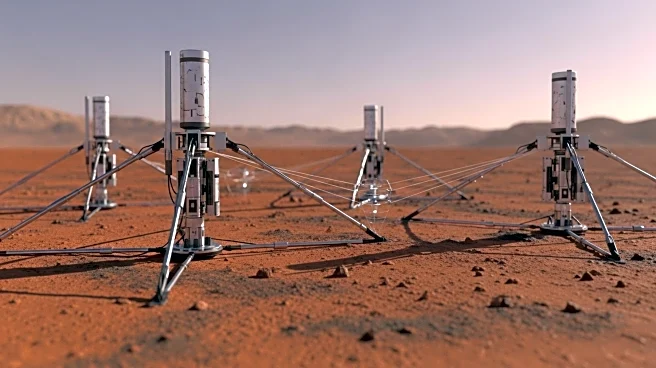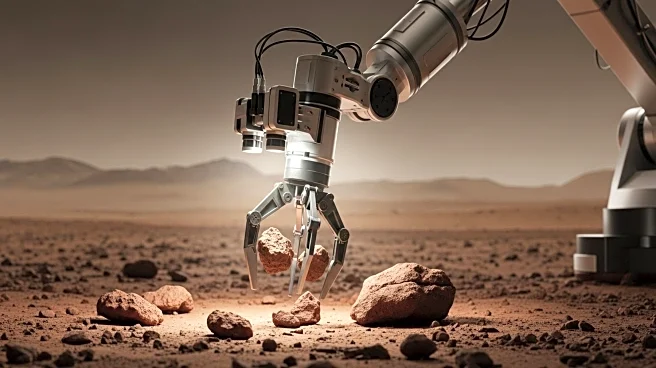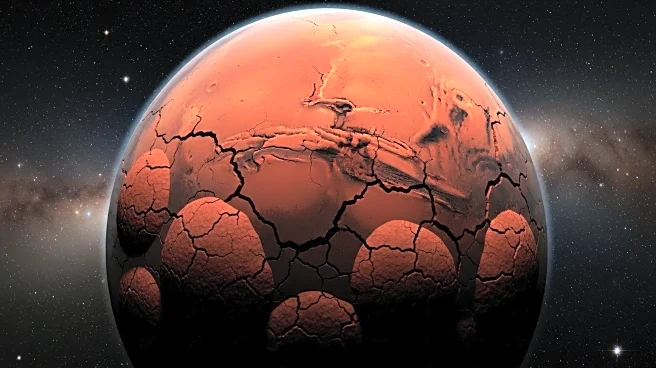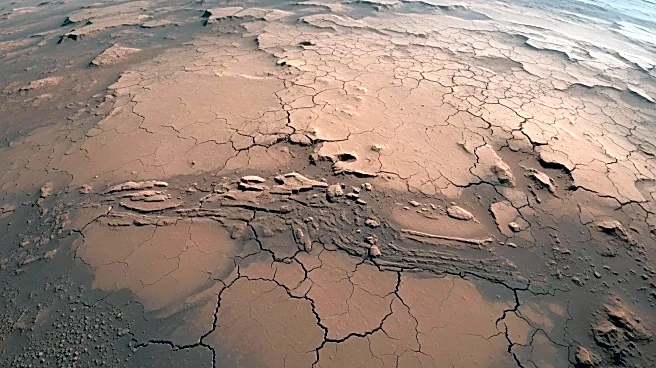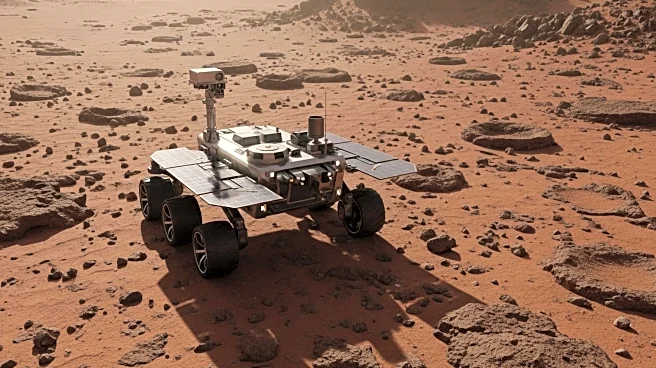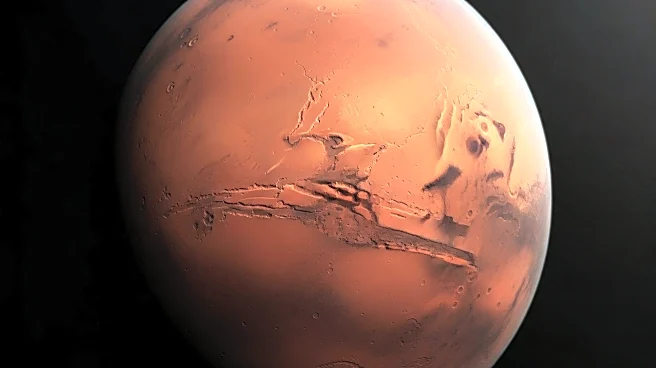What's Happening?
Recent research has revealed that fragments from massive space debris, dating back 4.5 billion years, are buried deep beneath Mars' surface. This discovery was facilitated by NASA's InSight lander, which recorded over 1,300 marsquakes during its mission. By analyzing seismic data, scientists mapped Mars' crust, mantle, and core, identifying irregularities likely caused by ancient collisions. Unlike Earth, Mars lacks tectonic plates, with seismic activity primarily resulting from cracking rocks and meteoroid impacts. The study highlights the sluggish evolution of Mars' mantle, preserving ancient features that might have been erased on Earth.
Why It's Important?
Understanding Mars' internal structure and seismic activity provides valuable insights into the planet's formation and evolution. The preservation of ancient fragments in Mars' mantle offers clues about the early history of the solar system and the processes that shaped rocky planets. This research can inform future missions to Mars and other celestial bodies, enhancing knowledge of planetary geology and evolution. The findings also raise questions about the formation of other rocky planets, such as Venus and Mercury, potentially influencing future exploration and study.


